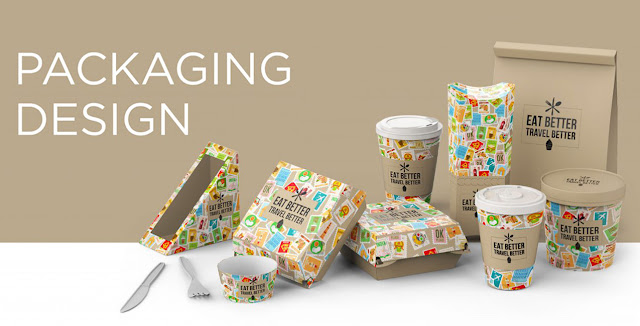Unwrapping the Art of Packaging Design: A Visual Feast for the Senses
In a world where first impressions count, packaging design plays a crucial role in capturing consumer attention, conveying brand identity, and influencing purchasing decisions. From minimalist elegance to bold creativity, packaging design is an art form that combines aesthetics, functionality, and storytelling. In this blog post, we'll delve into the fascinating world of packaging design, exploring its importance, key elements, and the impact it has on consumers.
The Importance of Packaging Design:
Packaging design serves as the first point of contact between a product and its potential buyer, making it a powerful marketing tool. A well-designed package can create a lasting impression, communicate brand values, and differentiate a product from its competitors. Whether it's standing out on crowded store shelves or making a memorable unboxing experience for online shoppers, packaging design plays a pivotal role in shaping consumer perceptions.
Key Elements of Effective Packaging Design:
Visual Identity: The visual elements of packaging design, including colors, typography, imagery, and branding, should reflect the essence of the product and resonate with the target audience. A cohesive visual identity helps create brand recognition and fosters trust and loyalty among consumers.
Functionality: While aesthetics are important, packaging design must also prioritize functionality. Packaging should be practical, easy to use, and protect the product during storage, transportation, and use. Factors such as material choice, structural integrity, and ergonomics all contribute to the overall user experience.
Storytelling: Great packaging design tells a story and evokes emotions. Whether it's through clever messaging, engaging imagery, or unique design elements, packaging has the power to captivate consumers and create memorable brand experiences. By tapping into consumer desires, aspirations, and values, packaging design can forge deeper connections and foster brand loyalty.
Sustainability: With increasing awareness of environmental issues, sustainable packaging design has become a top priority for many brands. Eco-friendly materials, minimalist designs, and recyclable packaging are just some of the ways brands are reducing their environmental footprint and appealing to environmentally conscious consumers.
The Impact of Packaging Design on Consumers:
Brand Perception: Packaging design influences how consumers perceive a brand, its products, and its values. A well-designed package conveys professionalism, quality, and attention to detail, while a poorly designed package may raise doubts about product quality or brand credibility.
Purchase Decisions: Packaging design has a significant impact on purchasing decisions, with studies showing that consumers often make split-second judgments based on packaging alone. Eye-catching designs, clear messaging, and attractive visuals can sway consumers to choose one product over another.
User Experience: Packaging design extends beyond the initial purchase to the entire user experience, including unboxing, storage, and disposal. Brands that prioritize user-centric packaging design create positive experiences that delight customers and encourage repeat purchases.
Conclusion:
Packaging design is more than just a wrapper; it's a powerful tool for brand differentiation, consumer engagement, and storytelling. By combining aesthetics, functionality, and sustainability, brands can create packaging that not only captivates consumers but also enhances the overall brand experience. In an increasingly competitive marketplace, investing in thoughtful packaging design is essential for standing out, building brand equity, and driving sales.




Comments
Post a Comment